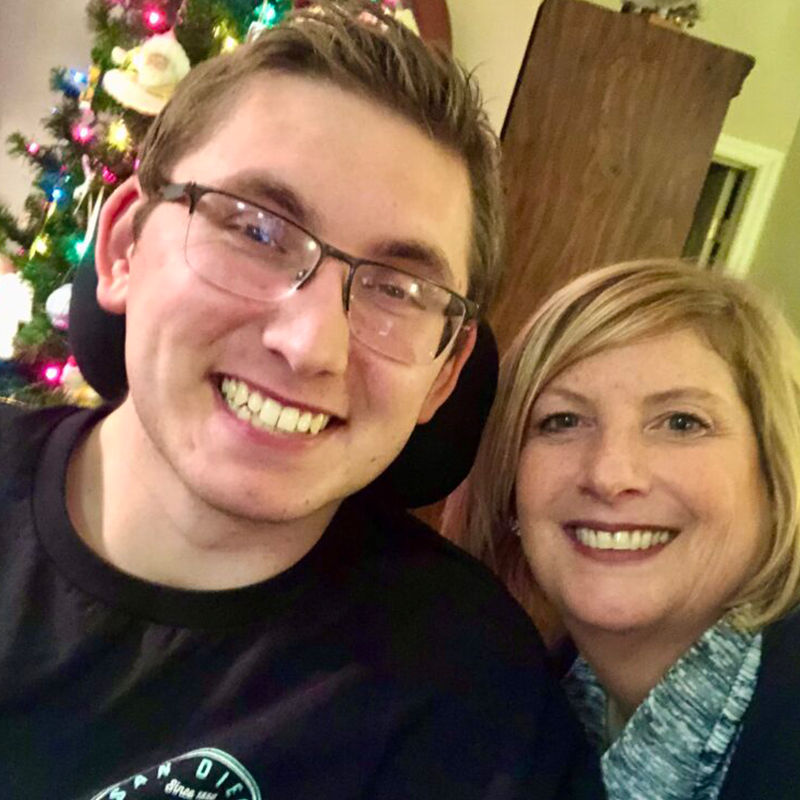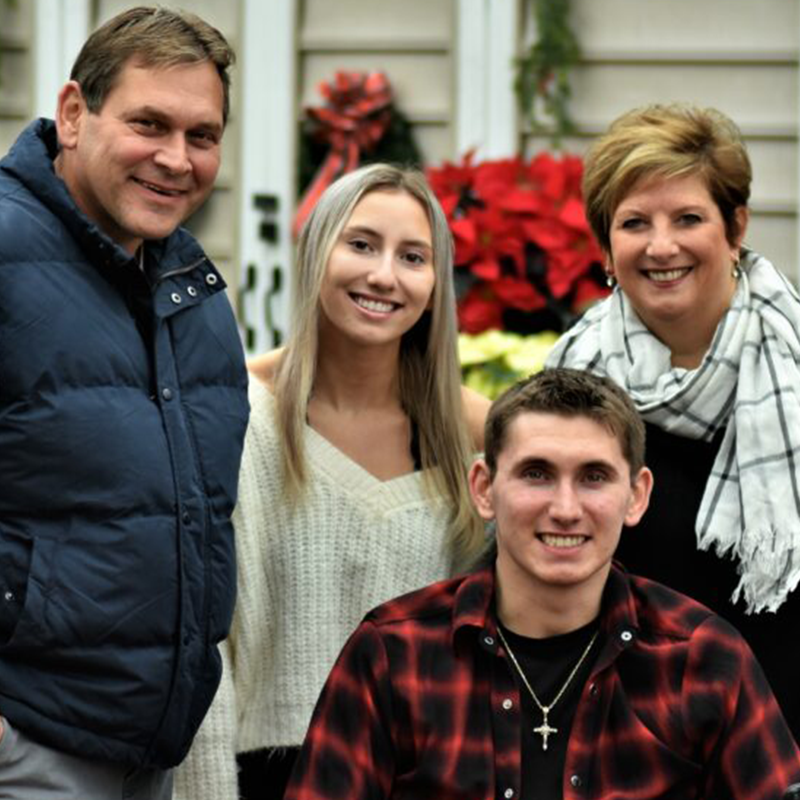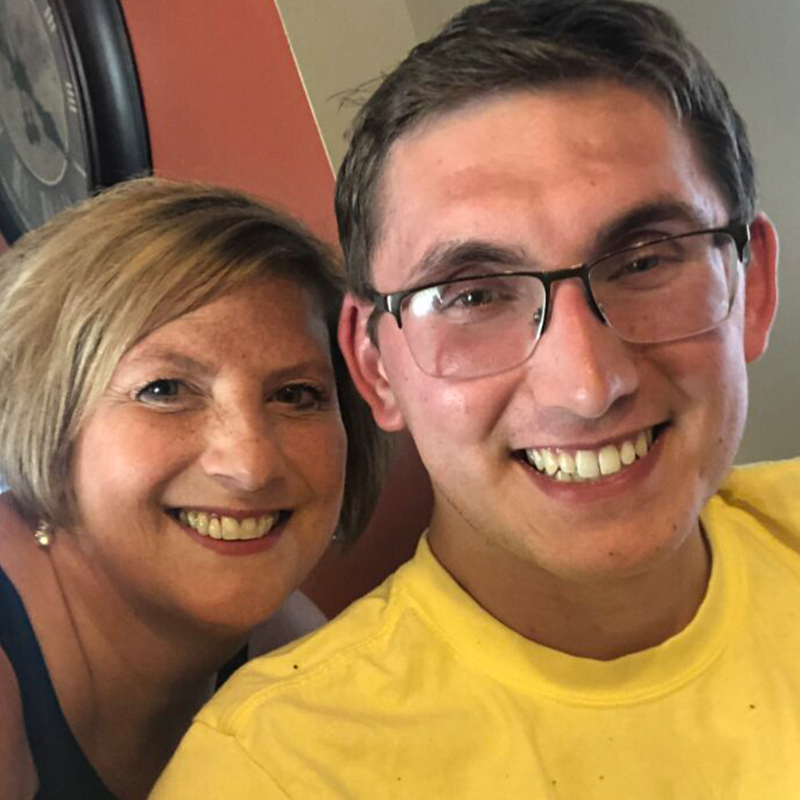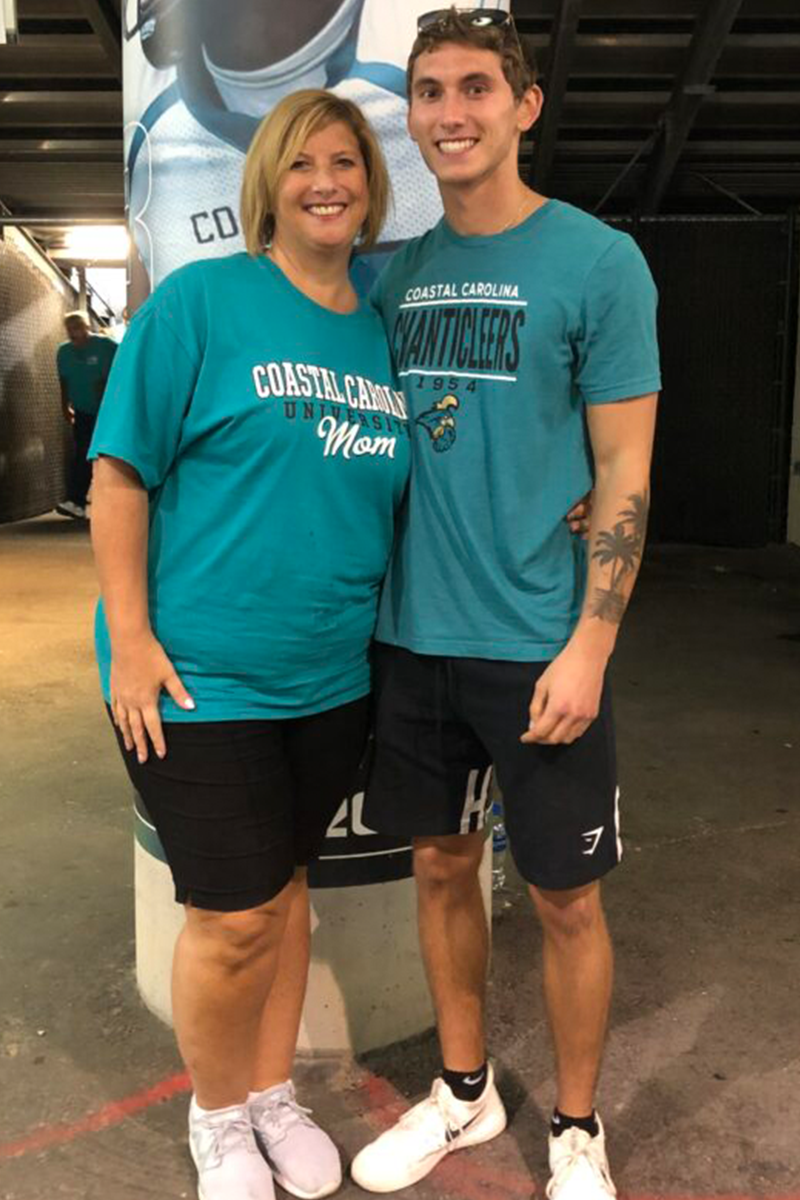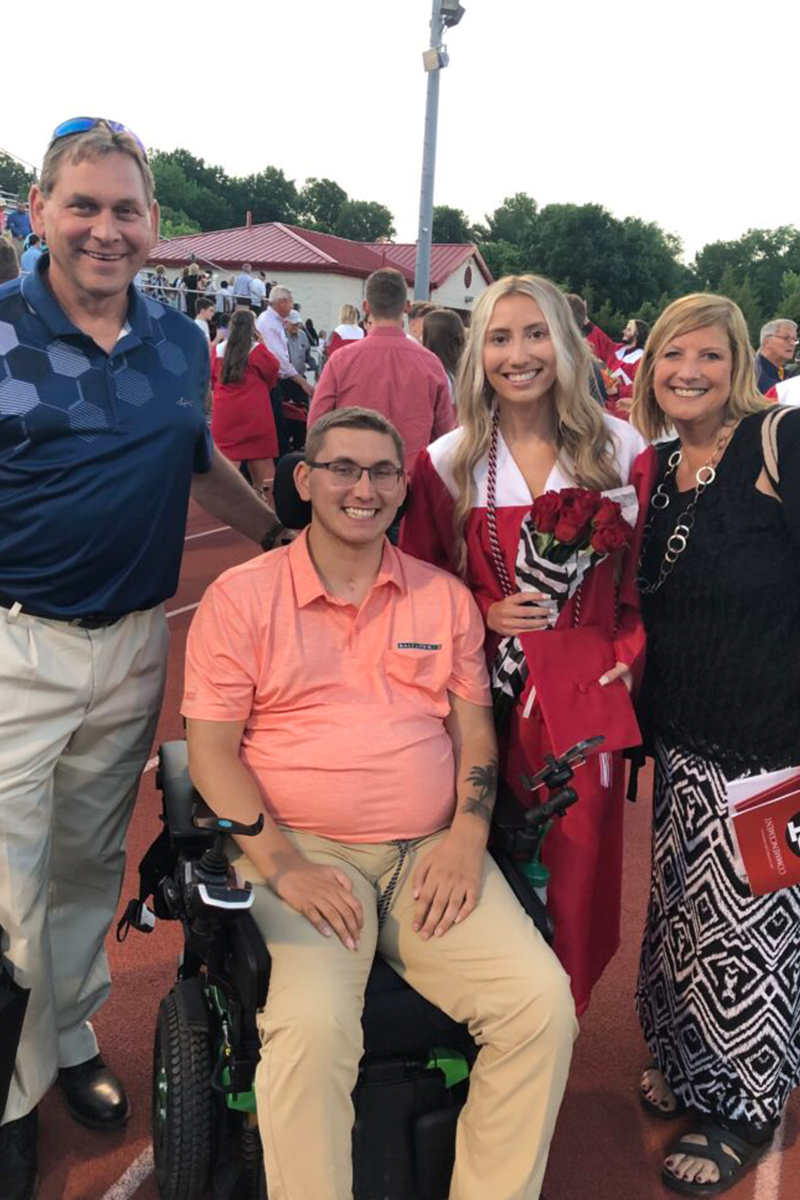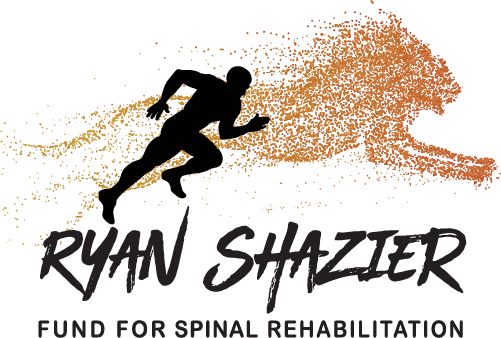Melinda Janosko figured out how to create a semblance of sanity from the chaos of her son’s SCI.
Melinda Janosko is, by her own admission, someone who craves normalcy. So, it was with careful planning that, in late 2019, Janosko took leave of her job. She wasn’t retiring but rather taking stock of her career and deciding her next opportunity.
Her husband, Ken, had started his own construction business, and her son Logan was a freshman in college. Her daughter, 15-year-old Erica, was playing high school volleyball. “We were enjoying life,” muses Janosko. “I was a ‘volleyball mom!’’ she laughs. Life was so “normal” that the Janoskos decided to join Ken’s side of the family, “which numbers 25-30 of us!” exclaims Melinda Janosko for a trip to Punta Cana.
Vacation Falls Short
They left on December 27, 2019. And by January 1, 2020, the normalcy Melinda Janosko and her family cherished had vanished. The Janoskos woke to the news that Logan fell from the second-story balcony in his room while ushering in the New Year with his cousins.
He was taken to a hospital an hour away from the resort. Between the language barrier, the demands for payment upfront, and the one English-speaking doctor confiding in Janosko that “you don’t want him operated on here,” Melinda Janosko began her journey as a caregiver for her son. At the time, I didn’t realize it!” she says, looking back.
Leaving on a Jet Plane
After paying more than $27,000 to get Logan released from the Dominican Republic hospital, Logan was airlifted to UPMC Presbyterian in Pittsburgh, PA, where he underwent C5-6 spinal fusion (he also had a T6-7 injury). Logan was also treated for a traumatic brain injury (TBI).
After a month-long stay at Presbyterian Hospital, Logan was transferred to UPMC for inpatient rehabilitation. He was discharged from inpatient rehab in March 2020, as the US shuttered for COVID-19. Before Logan could go home, Melinda and Ken Janosko had to learn all aspects of Logan’s care. Both parents had to learn how to transfer, bathe, cath, dress, and do the myriad of caregiving needs Logan would need at home.
Learning the Caregiver Ropes
“I watched what the doctors and nurses did all day and I thought, ‘We’re not medical professionals. How are we going to do this?’” relays Janosko. She said that in many ways, It was worse than when you bring a newborn home.
Melinda admits the gravity of caring for her own son didn’t fully hit until she was truly alone with all aspects of his care. “You know,” says Janosko, “those first months, I was very overwhelmed and scared.” She relates the task of catheterizing her own son. “I resisted for a long time,” she quietly says, “because it’s such a personal thing.”
But she pivoted, thanks to a rather stern nurse who said, “You know, you are going to have to learn how to do that!” And Janosko says she changed her perspective. “It was like I didn’t realize the severity of my son’s injuries,” she says, “and that I wasn’t living up to my end of the bargain.”
Acquiring the Tools
As Janosko grew into her caregiver role, she drew on her corporate background and started networking. Through a local Facebook Group, she met a mother in a similar situation. They met for dinner, and Janosko says she is somebody she can turn to with questions. “She even helped me pick out our stairlift.”
Janosko was anxious to get her family into a routine, to create that normalcy they all love. “And that did come fairly quickly, and I felt like I was pretty much the one providing that.” But, she says, “There was Logan, a grown man who was consciously relying on us to take care of him and was very scared of himself. And there was 16-year-old Erica, who saw her entire family change and still needed her parents. And then, there is Melinda. “And I’m someone who needs normal and clings to any little bit of it, and it was elusive…” she trails off.
Girl Time
To give herself and Erica some “special time,” she and Erica would hang out, watch TV, and “escape” together. “It felt normal for us,” she says. It was important self-care; she and Erica were recharging their batteries together. Janosko points out that there is a grieving process that goes hand-in-hand with any traumatic injury, and the grief must be addressed. “Everything that you want for your kid, and now, you’re living this alternative reality, and you’re having to do things for him that you know you shouldn’t have to do, making you really sad.” “I can honestly say that that’s something that’s always there, “she theorizes. Janosko relates that as she has taken on the caregiver role as a mother, her emotions have become heightened. “Daily, I feel everything in an emphasized mode,” she explains. “So, if something makes me happy, it makes me really happy,” because it doesn’t take much to get there,” she says. “But on the flip side, I feel things at a deeper level, so when I’m sad, I’m really sad.” Janosko quickly adds that her husband, Ken is quick to pull her out of any sadness. “I’m a realist,” she admits, “which can sometimes lead to depressing thoughts.” Ken is an optimist, quickly rescuing her from those “places of no.”
Shalieve
Wisdom
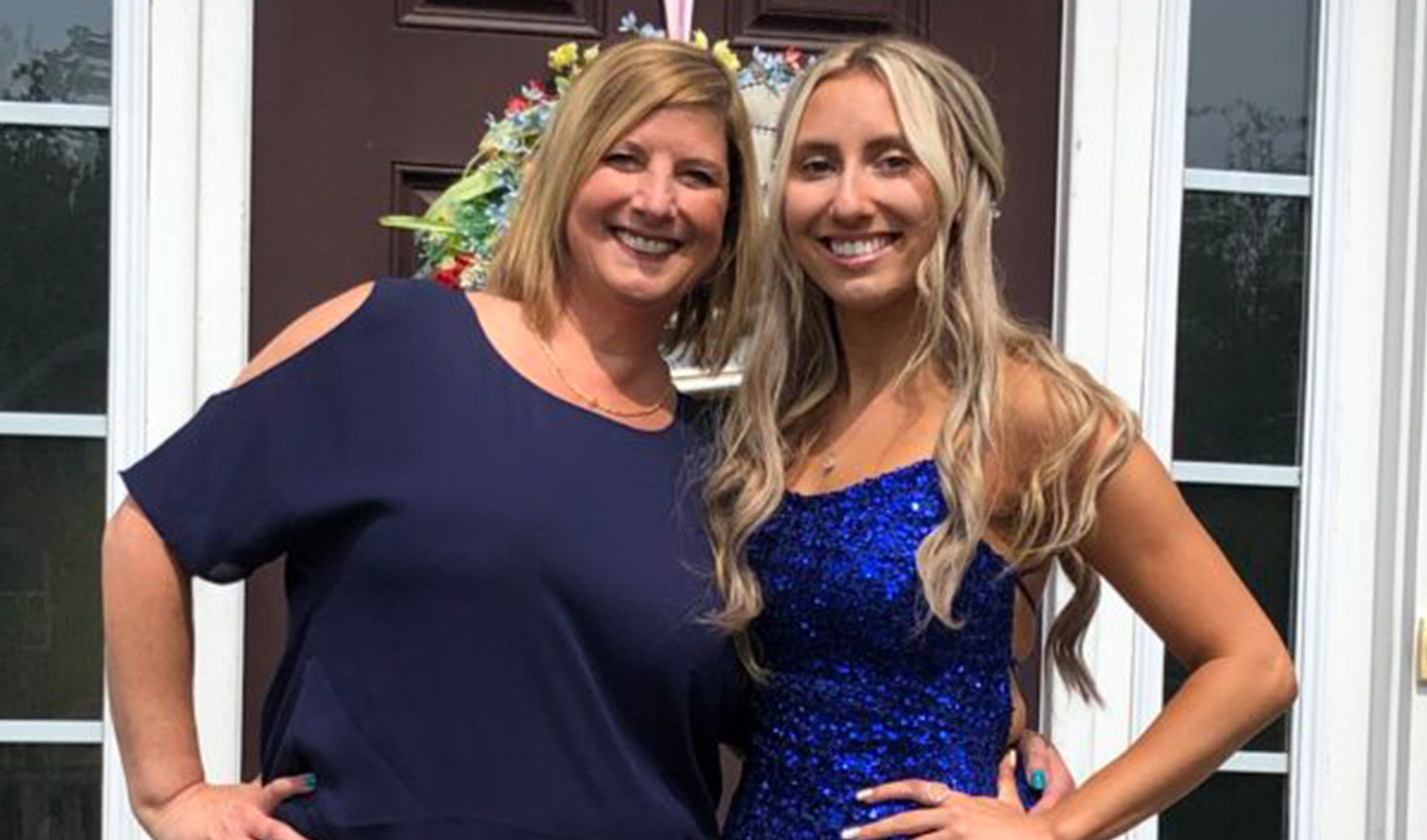
Mothering the Other Child
It’s one thing to become the mom/caregiver to an injured child. It’s quite another to be able to stretch one’s arms wider to care for a child that isn’t injured and doesn’t need all the hands-on care.
Melinda and Ken Janosko managed to do just that with their daughter Erica.
“For me,” smiles Janosko, “Erica is my escape. I’m a breast cancer survivor, and time with all my family is precious.”
To that end, Melinda and Erica took a 10-day trip to California, including San Diego, Hollywood , and LA for some sightseeing and whatnot.
The two also coached volleyball together, and Erica wrote her college essay about Logan's accident and how it impacted her. “How she had to learn to manage her own things for a while because Ken and I were consumed at the hospital.” Explains Janosko.
“But she also wrote how coaching volleyball with me was like an escape for the two of us and how much she enjoyed it and how it brought us closer,” smiles Janosko.

